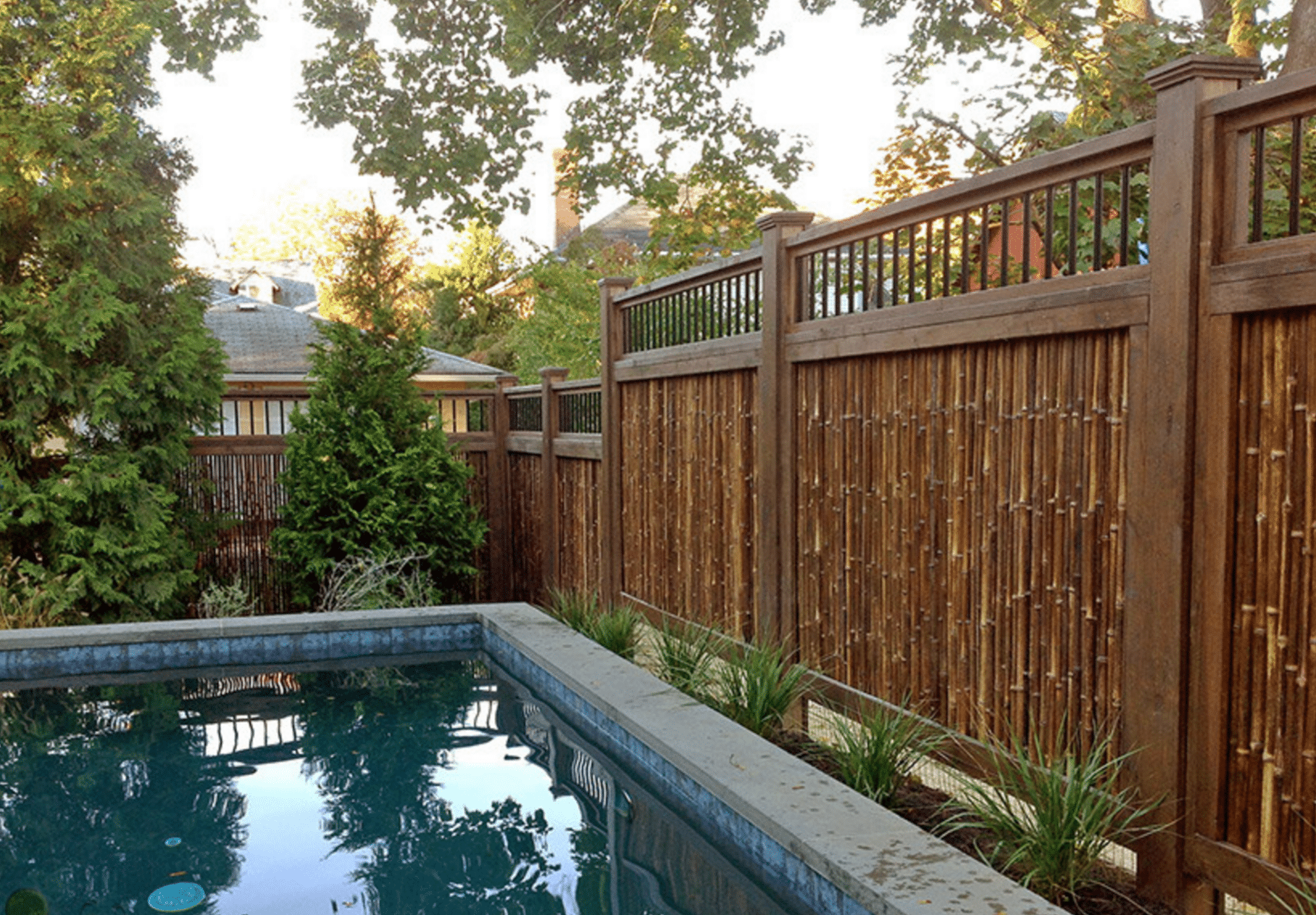All Categories
Featured
Setting up a fence around your building can improve personal privacy, safety and security, and aesthetic appeals. Nonetheless, before getting going, it's vital to establish whether you need an authorization for the setup. Various areas have varying guidelines, and comprehending what's called for will certainly help make sure that your fencing is legal, secure, and constructed according to regional requirements. Right here's an overview to assist you navigate the permitting process for fence installation.
Why Are Permits Required? Licenses are called for to guarantee that the installation of your fencing satisfies neighborhood building ordinance and zoning laws. These policies are in place to keep the security, look, and functionality of residential properties in your neighborhood. In addition, permits assistance avoid disputes with neighbors pertaining to residential or commercial property lines, fencing elevation, and other architectural information.
Local authorities require licenses to monitor things like exposure at intersections, public security, and possible damage to energies like pipes or electric lines. The procedure aids maintain your fencing project certified with security and legal requirements.
Kinds of Permits You May Need. The specific permits required can differ depending upon your area and the specifics of your project. Below are the most common kinds of permits you may need:
Building License. Lots of cities and regions require a building permit for fencings that surpass a particular height, typically over 6 feet. This authorization guarantees that your fence abides with structural criteria, specifically if it's made from specific products such as concrete, metal, or brick. Building authorizations are additionally needed when your fence affects the general landscape, like creating a sound barrier or obstructing a sightline.
Zoning License. Zoning authorizations are issued to ensure that your fencing follows neighborhood zoning laws. These regulations may regulate where fencings can be positioned on your building (e.g., front, backyard, or side), exactly how high they can be, and whether they can be installed near sidewalks or streets. Zoning regulations are placed in place to protect the total looks of areas and preserve web traffic security.
Obstacle Permit. Some areas have trouble regulations that establish exactly how much a fence must be from the property line, roadway, or certain public spaces. Problem licenses are developed to make sure that your fencing doesn't hinder neighboring properties or public locations. A building study may be needed to verify home lines prior to obtaining this sort of permit.
HOA Authorization. If you live in a community controlled by a Homeowners Association (HOA), you might require to get authorization from the HOA before setting up a fencing. HOAs frequently have stringent standards regarding the type of fencing admitted the area, including its material, height, and shade. Always talk to the HOA before beginning your task to stay clear of any type of disputes.
How to Look For a Fencing License. The procedure for acquiring a permit normally involves several actions:
Research Study Local Rules. Begin by checking your city or area's site to discover the certain needs for fence setup. You might need to see the regional preparation or building division in individual for more comprehensive info.
Prepare Your Application. The majority of cities will certainly need an application, that includes information concerning your prepared fencing, such as:
![]()
The kind of fence material (wood, vinyl, chain-link, and so on) The planned height of the fencing. The location and dimensions of the fencing. A home survey (to verify residential or commercial property lines) Send the Application. After completing the application, send it to the neighborhood structure or zoning workplace. You might be needed to pay a charge depending on your area and the dimension of your fence. Costs can vary, but they typically cover the price of processing your request and examining your strategies.
Wait On Authorization. When your application is submitted, the local authorities will review your strategies to ensure they meet zoning and constructing requirements. This procedure can take anywhere from a couple of days to a number of weeks, depending on the complexity of the task and the volume of authorization demands in your location.
![]()
Evaluation (If Required) Sometimes, you might need to set up an examination after the fencing is mounted to ensure it satisfies the called for standards. Your neighborhood office will certainly allow you understand if this step is required.
When You Do Not Required a Permit. Not every fencing setup requires a permit. Some situations where you may not need a license include:
Mounting a fence that's under a certain elevation (often 3-4 feet for front backyards) Changing an existing fence with one that coincides height and material. Mounting a temporary fencing (e.g., for building and construction or gardening) Nonetheless, also if your project seems small, it's constantly suggested to contact neighborhood authorities to make certain you're following the proper process.
Consequences of Not Getting an Authorization. Installing a fencing without the needed license can cause significant consequences, including fines, elimination of the fencing, and pricey reinstallation. In some situations, regional authorities may require you to change the fencing if it does not meet code demands. Additionally, not acquiring an authorization can create disagreements with neighbors, specifically if the fence is put incorrectly or goes against regional elevation policies.
Conclusion. Before mounting a fence, it is necessary to research the specific permitting demands in your location. If a permit is necessary and to make sure that you're following the proper treatment, get in touch with your local structure or zoning division to find out. By securing the proper permits, you'll guarantee and stay clear of legal issues that your fencing installation is safe, compliant, and easy.
Why Are Permits Required? Licenses are called for to guarantee that the installation of your fencing satisfies neighborhood building ordinance and zoning laws. These policies are in place to keep the security, look, and functionality of residential properties in your neighborhood. In addition, permits assistance avoid disputes with neighbors pertaining to residential or commercial property lines, fencing elevation, and other architectural information.
Local authorities require licenses to monitor things like exposure at intersections, public security, and possible damage to energies like pipes or electric lines. The procedure aids maintain your fencing project certified with security and legal requirements.
Kinds of Permits You May Need. The specific permits required can differ depending upon your area and the specifics of your project. Below are the most common kinds of permits you may need:
Building License. Lots of cities and regions require a building permit for fencings that surpass a particular height, typically over 6 feet. This authorization guarantees that your fence abides with structural criteria, specifically if it's made from specific products such as concrete, metal, or brick. Building authorizations are additionally needed when your fence affects the general landscape, like creating a sound barrier or obstructing a sightline.
Zoning License. Zoning authorizations are issued to ensure that your fencing follows neighborhood zoning laws. These regulations may regulate where fencings can be positioned on your building (e.g., front, backyard, or side), exactly how high they can be, and whether they can be installed near sidewalks or streets. Zoning regulations are placed in place to protect the total looks of areas and preserve web traffic security.
Obstacle Permit. Some areas have trouble regulations that establish exactly how much a fence must be from the property line, roadway, or certain public spaces. Problem licenses are developed to make sure that your fencing doesn't hinder neighboring properties or public locations. A building study may be needed to verify home lines prior to obtaining this sort of permit.
HOA Authorization. If you live in a community controlled by a Homeowners Association (HOA), you might require to get authorization from the HOA before setting up a fencing. HOAs frequently have stringent standards regarding the type of fencing admitted the area, including its material, height, and shade. Always talk to the HOA before beginning your task to stay clear of any type of disputes.
How to Look For a Fencing License. The procedure for acquiring a permit normally involves several actions:
Research Study Local Rules. Begin by checking your city or area's site to discover the certain needs for fence setup. You might need to see the regional preparation or building division in individual for more comprehensive info.
Prepare Your Application. The majority of cities will certainly need an application, that includes information concerning your prepared fencing, such as:

The kind of fence material (wood, vinyl, chain-link, and so on) The planned height of the fencing. The location and dimensions of the fencing. A home survey (to verify residential or commercial property lines) Send the Application. After completing the application, send it to the neighborhood structure or zoning workplace. You might be needed to pay a charge depending on your area and the dimension of your fence. Costs can vary, but they typically cover the price of processing your request and examining your strategies.
Wait On Authorization. When your application is submitted, the local authorities will review your strategies to ensure they meet zoning and constructing requirements. This procedure can take anywhere from a couple of days to a number of weeks, depending on the complexity of the task and the volume of authorization demands in your location.

Evaluation (If Required) Sometimes, you might need to set up an examination after the fencing is mounted to ensure it satisfies the called for standards. Your neighborhood office will certainly allow you understand if this step is required.
When You Do Not Required a Permit. Not every fencing setup requires a permit. Some situations where you may not need a license include:
Mounting a fence that's under a certain elevation (often 3-4 feet for front backyards) Changing an existing fence with one that coincides height and material. Mounting a temporary fencing (e.g., for building and construction or gardening) Nonetheless, also if your project seems small, it's constantly suggested to contact neighborhood authorities to make certain you're following the proper process.
Consequences of Not Getting an Authorization. Installing a fencing without the needed license can cause significant consequences, including fines, elimination of the fencing, and pricey reinstallation. In some situations, regional authorities may require you to change the fencing if it does not meet code demands. Additionally, not acquiring an authorization can create disagreements with neighbors, specifically if the fence is put incorrectly or goes against regional elevation policies.
Conclusion. Before mounting a fence, it is necessary to research the specific permitting demands in your location. If a permit is necessary and to make sure that you're following the proper treatment, get in touch with your local structure or zoning division to find out. By securing the proper permits, you'll guarantee and stay clear of legal issues that your fencing installation is safe, compliant, and easy.
Latest Posts
Find Out Why Chicago Drivers Choose Montclare Auto Repair for Reliable Service and Great Savings
Published en
1 min read
Discover Special Auto Repair Deals in Chicago at Montclare Auto Repair
Published en
1 min read
Explore Auto Services & More: Comprehensive Auto Care Solutions from Montclare Auto Repair
Published en
1 min read
More
Latest Posts
Find Out Why Chicago Drivers Choose Montclare Auto Repair for Reliable Service and Great Savings
Published May 23, 25
1 min read
Discover Special Auto Repair Deals in Chicago at Montclare Auto Repair
Published May 23, 25
1 min read
Explore Auto Services & More: Comprehensive Auto Care Solutions from Montclare Auto Repair
Published May 22, 25
1 min read